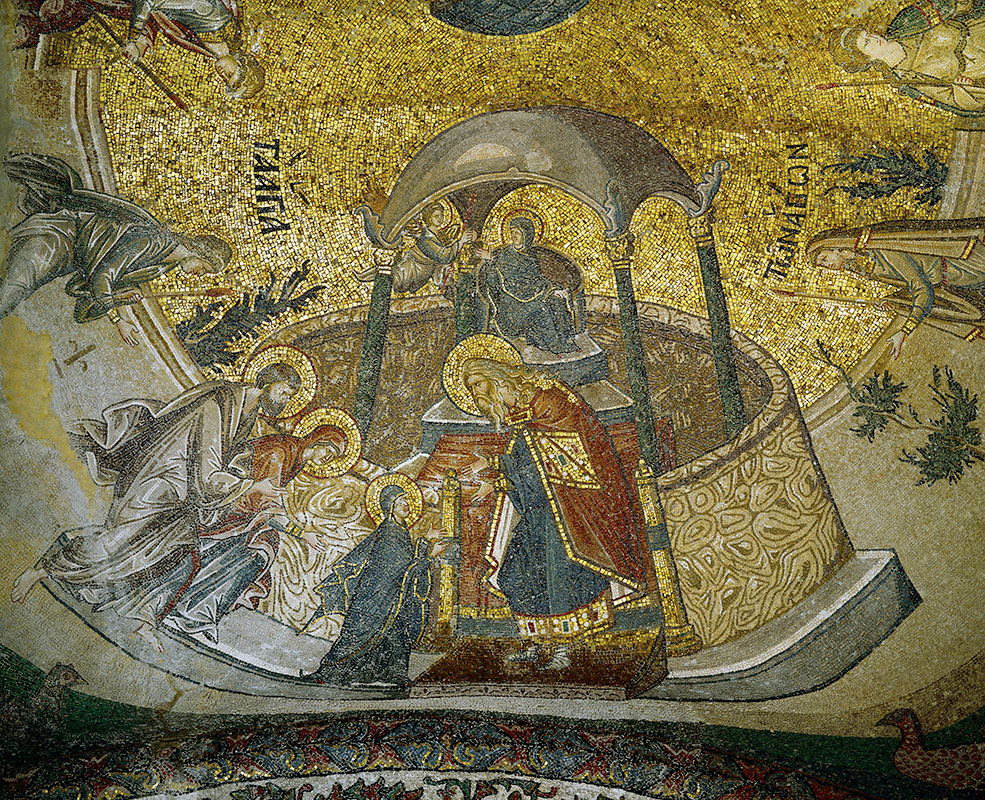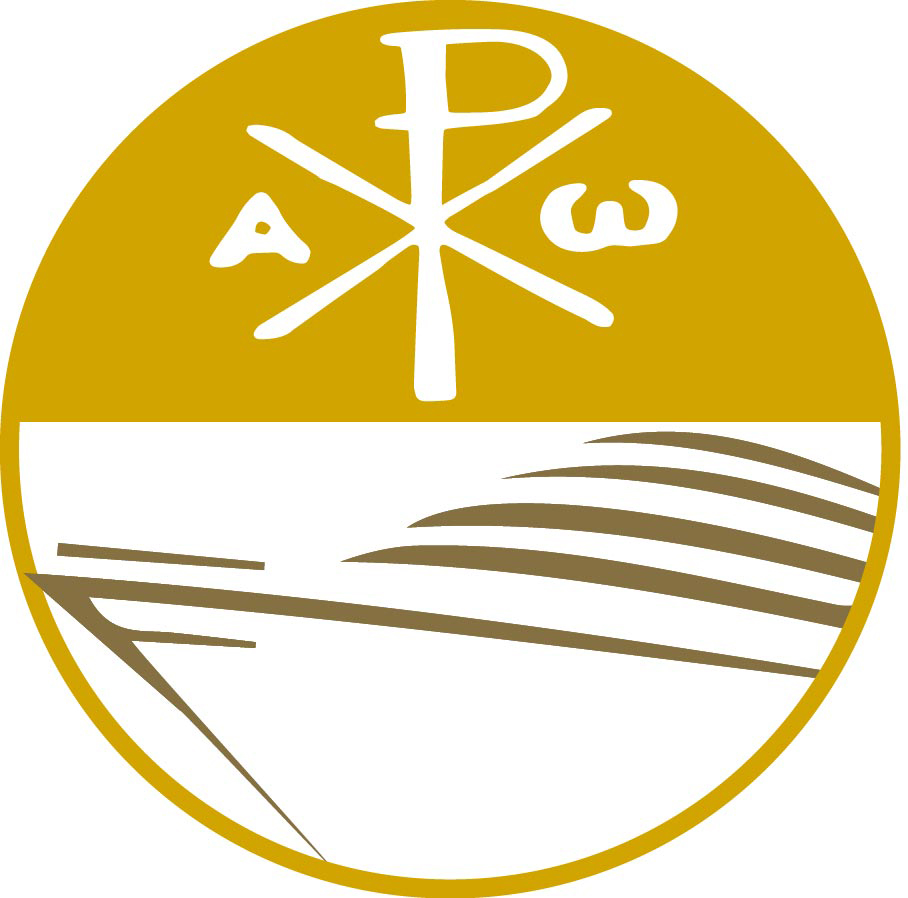
17 Feb Mary in the Temple: Fragments of an Exceptional Destiny
Solemnly posed, arms open and raised, gaze fixed on the highest priest, golden halo, blue maphorion fringed with gold which will distinguish her for eternity: Mary was three years old when she was presented at the Temple in fulfillment of the promise of her mother, Anne, who prayed to be blessed with a child, gave to God just before receiving the message of the angel. The mosaic scene of the Chora Church in Constantinople, inspired by the story of the apocryphal Gospel of James, condenses the classic iconography of the Presentation of the Virgin at the Temple across the architecture of a typical Byzantine church, with a low marble wall, a central gate, and steps which lead to a circular throne covered by a ciborium. The gestures of those present are measured yet at the same time each expressing a profound humanity: Joachim and Anne urge Mary forward towards the priest, who is ready to receive her in a place where access is granted solely to men, and the virgins who, accompanying the procession with lamps, behold this important moment.
The Greek inscription Ta agia tōn agiōn – “The Holy of Holies” – is a theological proclamation of the exceptional destiny of Mary that she will not only enjoy the privilege of entering into and staying for years at the Temple, but particularly that she will become the Chōra Tou Achōrētou, the Container of the Uncontainable. Thanks to the sophisticated means of uniting architecture with iconography, the theological mystery of the Virgin as the new Temple is conveyed.
Beneath the ciborium, seated upon a throne at the center of the temple, another unique scene confirms the extraordinary life of the future Theotokos: a half-length angel in flight appears from the left and offers her a round loaf of bread. The apocryphal Gospel of Pseudo-Matthew emphasizes the life of prayer of Mary in the Temple: «From the morning to the third hour she remained in prayer; from the third to the ninth she was occupied with weaving; from the ninth onwards she again returned to prayer. She did not cease to pray until there appeared to her the angel of God from whose hand she received food. […] Then, when the older virgins rested from their praisings of God, she did not rest at all, to the point that in praises and vigils there was no other before her, none more learned in the wisdom of the Law, more humble, more graceful in song, more perfect in every virtue» (6:2).
The fragments that the apocryphal Gospels have passed down to us about the infancy and youth of the Mother of God are precious, and the Byzantine-Orthodox iconography pays homage to such moments, preserving the divine mystery it accompanies. In the mosaic of Chora, the gestures and eyes grab our attention: it seems almost possible to perceive the words spoken and to sense those left unsaid, guarded in the heart of each. Moving us and evoking admiration, young Mary, enveloped in her undulating maphorion, proceeds freely with small yet great steps towards her own exceptional destiny.
The Greek inscription Ta agia tōn agiōn – “The Holy of Holies” – is a theological proclamation of the exceptional destiny of Mary that she will not only enjoy the privilege of entering into and staying for years at the Temple, but particularly that she will become the Chōra Tou Achōrētou, the Container of the Uncontainable. Thanks to the sophisticated means of uniting architecture with iconography, the theological mystery of the Virgin as the new Temple is conveyed.
Beneath the ciborium, seated upon a throne at the center of the temple, another unique scene confirms the extraordinary life of the future Theotokos: a half-length angel in flight appears from the left and offers her a round loaf of bread. The apocryphal Gospel of Pseudo-Matthew emphasizes the life of prayer of Mary in the Temple: «From the morning to the third hour she remained in prayer; from the third to the ninth she was occupied with weaving; from the ninth onwards she again returned to prayer. She did not cease to pray until there appeared to her the angel of God from whose hand she received food. […] Then, when the older virgins rested from their praisings of God, she did not rest at all, to the point that in praises and vigils there was no other before her, none more learned in the wisdom of the Law, more humble, more graceful in song, more perfect in every virtue» (6:2).
The fragments that the apocryphal Gospels have passed down to us about the infancy and youth of the Mother of God are precious, and the Byzantine-Orthodox iconography pays homage to such moments, preserving the divine mystery it accompanies. In the mosaic of Chora, the gestures and eyes grab our attention: it seems almost possible to perceive the words spoken and to sense those left unsaid, guarded in the heart of each. Moving us and evoking admiration, young Mary, enveloped in her undulating maphorion, proceeds freely with small yet great steps towards her own exceptional destiny.

